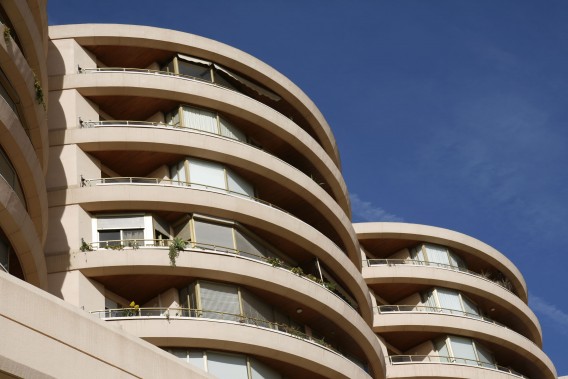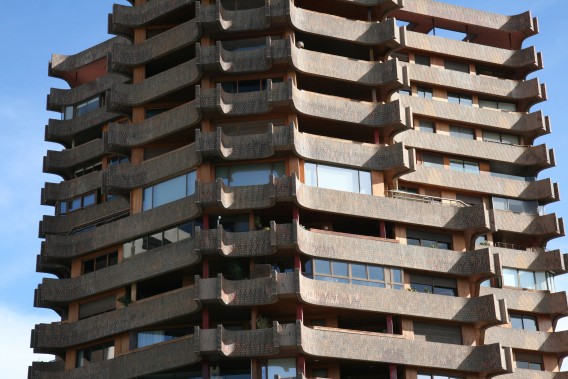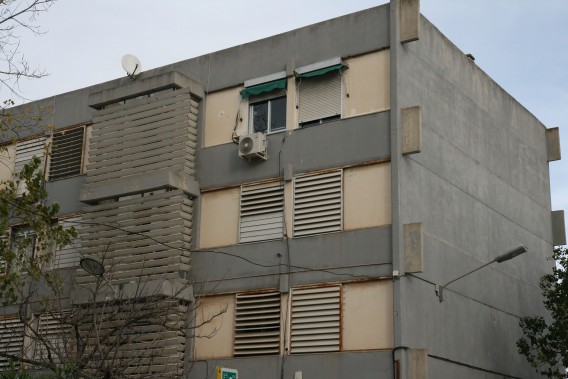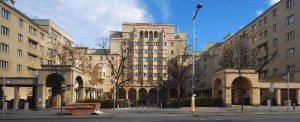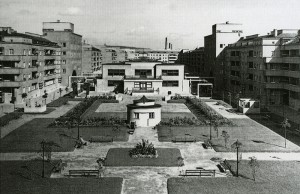Our architectural heritage is an element of cultural identity and of great collective wealth. The study of it must be important for the dissemination, knowledge and enjoyment of future generations. There are many interesting buildings in the city of Valencia that do not have an adequate study. In the same way it happens with a large number of architects, with works of great importance in those years, who do not have their own monograph.
The Second Republic had a very specific influence and was a great boost towards achieving the country’s architectural and urban modernity, conditioned by new materials or construction techniques and new social needs. The end of the war brought with it, in many aspects, the elimination of all traces of modernity in the country’s architecture. The decade of the forties was determined by the political isolation and the economic autarky of the Franco regime. These factors caused a standstill in Spanish productive activity and a shortage of consumer goods.
Architectural renovation efforts were relegated by the Franco regime. The development of rationalist architecture, which had appeared in the last years of the Republic, was almost symbolic after the Civil War, especially in the official discourse. Spanish architecture moved towards the formulation of its own national style, with an eye toward imperial architecture. It is a return to classicist traditionalism of an academic sign, a traditionalist art with historicist, regionalist or eclectic elements. Madrid will be the showcase for this new national architecture at the service of the institutions.
In the 1950s, eclectic historicism evolved towards a more modern style, coinciding with the end of autarky and the opening to the exterior. The progressive implementation of this style will be accompanied by the importation of new materials and construction techniques. There is also a return to the rationalist style by some architects. The reasons that explain this openness have their origin in the weak situation of the national economy, forced to request international bank credits and to liberalize imports.
Social policy becomes the main propaganda component of the regime to build the idea of national community among the Spanish. Housing appears as one of the fundamental pillars of that system and an effective propaganda tool in promoting the Franco regime. This policy will leave its influence on the social and developmental context of the cities, having a series of consequences on the landscape and their surroundings. Among the factors that determine this expansionist influence, and also the rapid implementation of social housing in Spain, is the definitive emigration leap from the countryside to the city by thousands of people in a progressive and constant course, the conception of the city as a macrocity or the different public policies.
Some precedents for social housing can be found in some European countries such as the Netherlands, Germany or Austria. Paradigmatic examples are the höfe present in Vienna, the hofjes in Amsterdam or the Fuggerei complex in Augsburg. The development and characteristics of these constructions are determined by factors such as their location, the size of the plot or the materials used.
The exhibition “25 Years of Modern Architecture in Valencia (1950-1975)” reflects on the different ways or ideas of conceiving urban planning or the architecture of the city from contemporary thought, making the visitor witness to the set of transformative changes produced in the modern society of that quarter century. The exhibition, curated by Alejandro Chust, art historian and professional specialized in the field of Cultural Heritage, tries to synthesize the architecture of that quarter of a century, in its diversity of styles, functions and construction procedures, through some architectural examples or relevant housing groups, both public and private development. The selection has been made based on stylistic, typological and chronological criteria. Everything to compile some of the main architectural currents of those years that will serve as a guide to create a synthesis of the architecture of those years and go through the main changes in housing and urban planning that occurred in the city of Valencia throughout the third quarter twentieth century.

25 years of Modern Architecture in Valencia (1950-1975). Text complete

